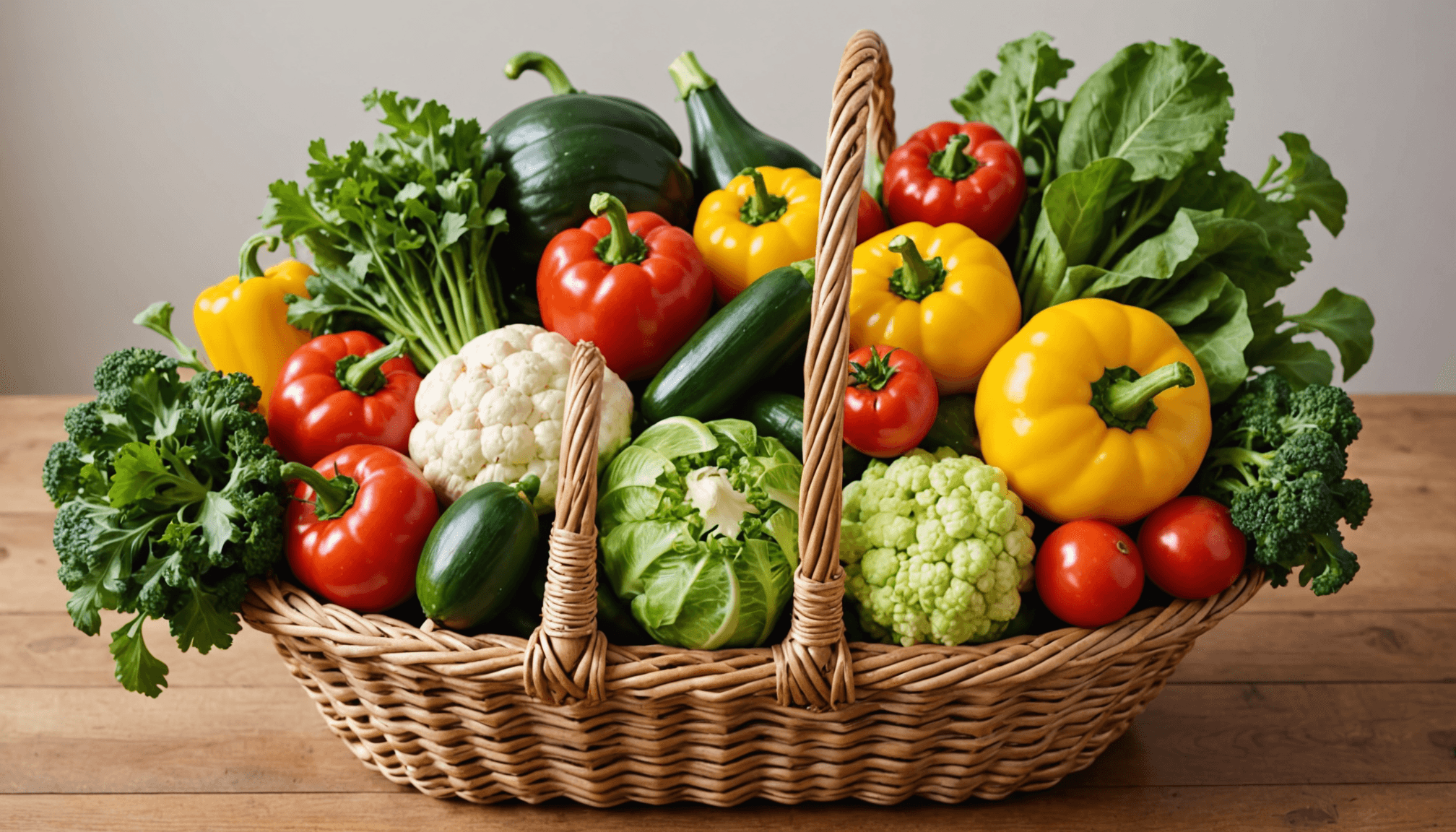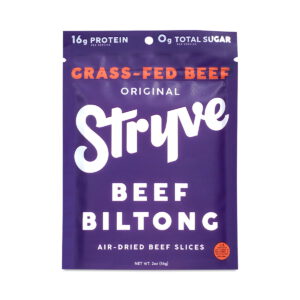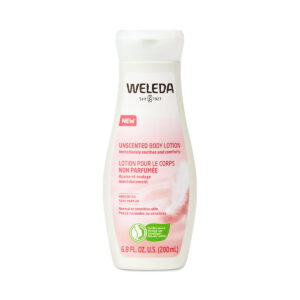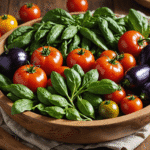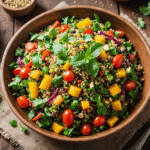- Understanding meal prep
- Essential kitchen tools
- Choosing the right ingredients
- Meal prep techniques
- Storage solutions for freshness
- Healthy meal prep ideas
When it comes to grocery shopping for meal prep, the process can be an adventure in creativity and healthiness. To maximize your efficiency and make the most of your time and budget, consider the following tips:
- Make a list: Before heading out, take a moment to plan your meals and create a shopping list. This helps avoid impulse buys and ensures you only purchase items that contribute to your healthy cooking goals.
- Explore local markets: Farmers’ markets are treasure troves of fresh, seasonal produce. Not only can you support local farmers, but you’ll also find organic fruits and vegetables that taste better and are often more nutrient-dense than their supermarket counterparts.
- Focus on whole foods: Fill your cart with whole, unprocessed foods like grains, legumes, nuts, and seeds. These ingredients provide excellent fuel for the body and can be incorporated into a variety of meal prep dishes.
- Check for vegan options: If you’re looking for plant-based proteins, brands like Quorn or Beyond Meat offer nutritious and flavorful alternatives. Look for items like chickpeas, lentils, tofu, and tempeh, which are not only high in protein but also versatile for various recipes.
- Budget-friendly finds: Canned beans, frozen vegetables, and whole grains such as brown rice and quinoa are affordable staples that make meal prep easier and more economical. Don’t forget to keep an eye out for sales and discounts, especially on bulk items.
- Plan for storage: Invest in quality containers that are suitable for freezing and microwaving. Glass containers with airtight lids are great for keeping your meal prep fresh and are environmentally friendly.
- Safety first: When shopping online, ensure you’re using secure websites that protect your personal information. Look for HTTPS in the URL and read the reviews to gauge the reliability of the vendor. When purchasing perishable items, check the delivery methods to ensure your food will arrive fresh.
- Prioritize ingredients with staying power: Consider purchasing ingredients that have longer shelf lives, such as dried herbs, spices, and frozen fruits. These can enhance your meal prep dishes while reducing waste.
By incorporating these tips into your grocery shopping routine, you can streamline your meal prep process, saving time and money while ensuring you always have healthy, delicious ingredients on hand. The key is to be intentional about your purchases and to embrace the variety that both local markets and grocery stores offer.
Essential kitchen tools
Essential kitchen tools play a crucial role in ensuring that your meal prep experience is seamless, efficient, and enjoyable. Having the right tools at your disposal not only saves time but also enhances the quality of your dishes. Here’s a detailed look at some indispensable items that can transform your cooking routine:
- Chef’s Knife: A high-quality chef’s knife is essential for chopping vegetables, slicing meats, and dicing herbs. Investing in a good knife will improve your chopping speed and precision, making meal prep quicker and safer.
- Cutting Board: A sturdy cutting board provides a safe workspace for preparing ingredients. Opt for a non-slip board that’s easy to clean. Having multiple boards for different food types can prevent cross-contamination.
- Measuring Cups and Spoons: Accurate measurements are vital in cooking, especially when following recipes. A set of measuring cups and spoons ensures you use the right amounts of spices, liquids, and dry ingredients, enhancing the flavors of your meals.
- Mixing Bowls: A variety of mixing bowls serves multiple purposes, from mixing ingredients to storing leftovers. Look for sets that stack for easy storage and are made from materials that are durable and easy to clean, like glass or stainless steel.
- Food Processor: A food processor is a versatile tool that can save time on tasks like chopping, shredding, and pureeing. It’s particularly useful when preparing large batches of meals, allowing you to create sauces, dips, or chop vegetables in seconds.
- Slow Cooker or Instant Pot: These appliances are perfect for effortlessly preparing meals. A slow cooker allows for set-and-forget convenience, while an Instant Pot can reduce cooking time dramatically. Both options can help in preparing soups, stews, and one-pot meals that are ideal for meal prep.
- Storage Containers: Quality storage containers are essential for keeping your meal prep organized and fresh. Look for airtight, BPA-free containers that are microwave and dishwasher safe. Having a variety of sizes makes it easier to store different portions of meals and snacks.
- Spiralizer: This creative tool is great for transforming vegetables into noodles, making it easier to incorporate more veggies into your meal prep for healthy cooking. Zucchini noodles and carrot spirals add nutritional value and can act as wonderful substitutes for traditional pasta.
To help in selecting the right tools, the following table compares common kitchen essentials based on their utility, ease of use, and typical price range:
| Kitchen Tool | Utility | Ease of Use | Typical Price Range |
|---|---|---|---|
| Chef’s Knife | Cutting & chopping | Medium | $20 – $200 |
| Cutting Board | Prep work surface | Easy | $10 – $50 |
| Measuring Cups/Spoons | Ingredient measurement | Easy | $5 – $30 |
| Mixing Bowls | Mixing & storing | Easy | $10 – $40 |
| Food Processor | Chopping, slicing, blending | Medium | $30 – $400 |
| Slow Cooker/Instant Pot | Cooking | Easy | $20 – $150 |
| Storage Containers | Storing meals | Easy | $15 – $100 |
| Spiralizer | Vegetable noodles | Medium | $10 – $40 |
By equipping your kitchen with these essential tools, you’ll set a solid foundation for efficient meal prep and healthy cooking, ultimately making the process enjoyable and less time-consuming.
Choosing the right ingredients
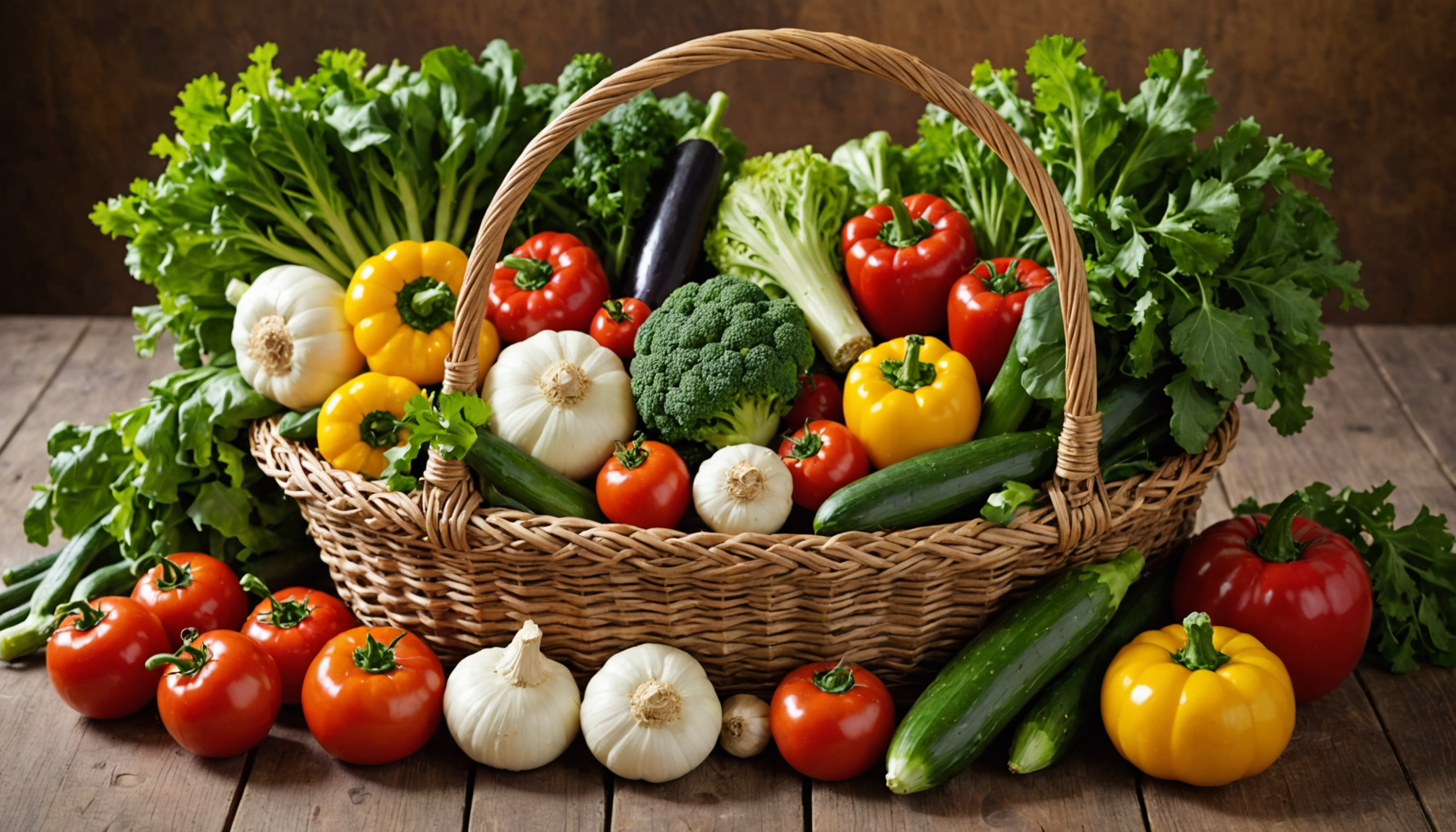
Grocery shopping is not just a routine task; it’s an opportunity to stock your pantry with the essentials for healthy cooking and vibrant meal prep. Here are some tips to turn your grocery trips into efficient, budget-friendly adventures that cater to your nutritional needs while ensuring the safety of your ingredients.
- Find a reliable store: Whether you prefer local grocery stores or larger chains, choose a store that prioritizes fresh produce and has a commitment to quality. This is especially important for perishable items like fruits, vegetables, and dairy products, ensuring you get the freshest ingredients for your meal prep.
- Seasonal shopping: Buy seasonal fruits and vegetables for the best flavor, nutrition, and price. In-season produce is often lower in cost and more abundant, making it a budget-friendly option. Consider visiting your local farmer’s market, where you can often find organic and locally sourced products.
- Check the labels: When selecting packaged foods, read the nutrition labels carefully. Look for items low in added sugars, sodium, and unhealthy fats. Whole grain options should be prioritized over processed products. For example, instead of white rice, consider brown rice or quinoa, which offer added nutritional benefits.
- Bulk buying: Consider purchasing staples such as grains, legumes, nuts, and seeds in bulk. This approach not only reduces costs but also minimizes packaging waste. Just make sure you store them properly to maintain freshness. Glass jars or airtight containers work wonders to keep these essentials long-lasting.
- Embrace frozen options: Frozen fruits and vegetables are often flash-frozen at their peak ripeness, retaining nutrients and flavor. They can be just as healthy (or healthier) than their fresh counterparts and offer convenience without sacrificing quality. This makes them perfect for last-minute meal prep!
- Choose vegan-friendly options: If you’re adopting a plant-based diet, seek out alternative protein sources like chickpeas, lentils, and assorted beans, which are inexpensive and versatile. Tempeh and tofu are also great choices and can be used in various dishes, enhancing your meal prep experience.
- Mind your safety: When shopping online, stick to reputable retailers or community-supported agriculture (CSA) programs. Always verify the site’s security by checking for secure payment options and reading customer reviews. Be cautious of vendors with unusual pricing; if a deal sounds too good to be true, it might be!
- Meal prep essentials: Prioritize staples that enhance your healthy cooking, such as spices, herbs, and healthy oils (like avocado or olive oil). These ingredients can significantly elevate the flavor of your meals while providing health benefits.
By implementing these strategies, you can navigate your grocery shopping with greater confidence and creativity. With an emphasis on fresh, whole foods, and mindful purchasing, you’ll be well on your way to preparing delicious meals that contribute to your overall health and wellness. The essentials you choose will not only fuel your body but also inspire your culinary adventures.
Meal prep techniques
When delving into the realm of meal prep techniques, the key lies in organization and efficiency, enabling a smooth cooking experience. A well-structured meal prep session can transform how you approach healthy cooking, making it not only more manageable but also enjoyable.
Start by planning your meals for the week, which will ultimately dictate the techniques you’ll employ. A variety of methods can be used to prepare your meals, ranging from batch cooking to using specialized appliances. Batch cooking is one of the most effective ways to save time and ensure you have ready-to-eat meals throughout the week. Begin with a menu based on your nutritional goals and preferences. Choose a few staple recipes that can easily share ingredients. For instance, a roasted vegetable medley can be used in salads, sandwiches, or as a side dish, while baked chicken can be portioned for various meals, from stir-fries to grain bowls.
Additionally, employing the assembly-line technique can maximize your efficiency. Prepare all your ingredients first; chop vegetables, marinate proteins, and measure out grains. Then, with your organized setup, you can sequentially prepare each dish without losing momentum. This method not only speeds up the prep time but also keeps you focused, as you’re less likely to get distracted once you establish the flow.
Incorporate the use of versatile cooking methods, such as steaming, grilling, or sautéing, depending on the variety of textures and flavors you wish to achieve in your meal prep. For example, steaming vegetables ensures they retain their nutrients, while grilling can enhance the taste of proteins. Using these techniques can also help in diversifying your meals, making healthy cooking more exciting.
Utilizing appliances like slow cookers or pressure cookers can also simplify your process. These devices allow you to prepare meals with minimal oversight, freeing you up to tackle other tasks or simply relax. For instance, you can throw a variety of ingredients into a slow cooker in the morning and return home to a beautifully prepared stew, ready for portioning.
Time management is critical, especially when preparing multiple meals at once. Cooking similar items together can save energy and time; for instance, roast vegetables and proteins simultaneously in the oven. Also, pay attention to cooking times; prepare items with similar cooking durations together to optimize your oven or stovetop use.
Don’t forget the importance of cooling down your meals properly before storage. This is particularly crucial for maintaining freshness and preventing bacteria growth. Allowing hot meals to cool to room temperature before refrigerating or freezing them can help with safety and quality.
Finally, taking advantage of leftovers is a smart way to keep your meal prep sustainable and practical. Plan recipes that intentionally yield extra servings, so you can enjoy the fruits of your labor even on nights when cooking may feel less appealing.
“The secret of success in the kitchen is to plan and organize.”
By integrating these techniques into your meal prep, you’ll foster not only a healthier lifestyle but also a sustainable approach to cooking that honors both your time and your nutritional aspirations.
Storage solutions for freshness
 Storing your prepped meals properly is crucial to maintaining their freshness, flavor, and safety. It begins with choosing the right containers; invest in high-quality, airtight storage options. Glass containers are not only eco-friendly but also prevent any transfer of residual flavors, keeping your meals tasting just as fresh as when you prepared them. Choose containers that are microwave and dishwasher safe for added convenience, allowing you to heat and clean them without fuss.
Storing your prepped meals properly is crucial to maintaining their freshness, flavor, and safety. It begins with choosing the right containers; invest in high-quality, airtight storage options. Glass containers are not only eco-friendly but also prevent any transfer of residual flavors, keeping your meals tasting just as fresh as when you prepared them. Choose containers that are microwave and dishwasher safe for added convenience, allowing you to heat and clean them without fuss.
Labeling is another fundamental practice in storage solutions. By labeling your containers with the date and contents, you can easily keep track of when you prepared your meals and ensure you’re using them within a safe timeframe. This method not only helps in maintaining food safety but also minimizes food waste—ensuring that the delicious meals you worked hard to create don’t go uneaten.
Consider the arrangement of your meals in the refrigerator or freezer as well. Store the oldest meals at the front, making them the first to be consumed. This tactical placement encourages you to prioritize older meals, helping to clear out your stock and enjoy them when they’re at their best quality. If you’re using the freezer, portioning meals into single servings can simplify reheating—allowing you to easily grab just what you need without defrosting more than necessary.
For items like fresh herbs, consider trimming their stems and placing them in a small glass of water—this can prolong their freshness. Similarly, for leafy greens, placing them between paper towels within a container can absorb excess moisture and prevent wilting. Root vegetables and most hard fruits can be stored in a cool, dark place to extend their shelf life.
Another consideration is the ideal storage temperature. Refrigerate perishable items promptly to inhibit bacterial growth, and ensure your fridge is set to the right temperature (below 40°F). For frozen meals, ensure your freezer maintains a temperature at or below 0°F to maintain quality and flavor without freezer burn.
Your meal prep journey is not complete without thoughtful storage solutions that keep your ingredients and leftovers fresh. This not only promotes healthy eating but also cultivates a lifestyle of efficiency and organization in your cooking practice.
- How long can I store meal preps in the fridge?
- Generally, most meal preps can be stored in the refrigerator for 3 to 4 days. However, dishes with yogurt or seafood may require shorter durations, so it’s best to consume those sooner.
- What types of containers are best for meal storage?
- Airtight glass containers are highly recommended, as they help maintain freshness and prevent odor transfer. Additionally, BPA-free plastic containers are convenient for lightweight storage; just ensure they are microwave-safe.
- Can I freeze all types of meals?
- While most meals freeze well, creamy sauces or salads with dressings may not maintain their texture and flavor after thawing. It’s generally best to freeze meals in their base forms and add delicate components before serving.
- How should I cool my meals before storage?
- Allow your meals to cool to room temperature for no more than two hours before storing them in the fridge or freezer. This practice helps prevent bacterial growth and maintains food safety.
- Is it safe to reheat meals more than once?
- Ideally, you should only reheat meals once to preserve quality and safety. Repeated reheating can lead to a loss of moisture and texture, as well as increase the risk of bacterial contamination.
- What’s the best way to thaw frozen meals?
- The safest way to thaw frozen meals is in the refrigerator overnight. For a quicker method, use the microwave but ensure the meal is consumed immediately after thawing if using this method.
- How can I prevent freezer burn on my meal prep items?
- To prevent freezer burn, wrap food tightly in plastic wrap or aluminum foil before placing them in sealed containers. Removing as much air as possible from storage bags can also significantly enhance freshness.
Healthy meal prep ideas
Grocery shopping can feel like a daunting task, especially when you’re aiming to stick to a meal prep regimen that prioritizes healthy cooking. But with the right strategies, this necessity can transform into an enjoyable and efficient experience. Here are some fun and practical tips to enhance your shopping experience, whether you’re at a local store or browsing online.
- Set a Budget: Before you step into the store or start browsing online, set a clear budget. This way, you can consciously choose healthier ingredients without overspending. Keep a running total on your phone or a notepad to stay on track as you fill your cart.
- Opt for Bulk Bins: Bulk bins are a treasure chest for the savvy shopper! Not only can you find grains, nuts, and seeds at a lower price, but buying in bulk lets you purchase exactly the amount you need, minimizing waste. Plus, it’s environmentally friendly!
- Shop On a Full Stomach: Trust us; this is a game changer! Shopping when you’re hungry can lead to impulse buys that derail your meal prep goals. Have a healthy snack before you head out, so you’re less tempted by unhealthy options.
- Incorporate Plant-Based Proteins: Stock up on high-protein staples such as canned chickpeas, lentils, and black beans. They are budget-friendly, versatile, and perfect for various meal prep recipes, from hearty salads to rich stews.
- Look for Seasonal Produce: Align your shopping list with what’s in season. Not only will you find the best flavor, but seasonal items are often cheaper and support local agriculture. Think fresh tomatoes in summer or squash in autumn for delicious meal prep options!
- Mind Your Online Safety: While shopping online can save time, always prioritize your safety. Use reputable websites with secure payment methods and read reviews before purchasing. Look for customer service options in case something goes wrong with your order.
- Explore Local Farms: If your area has farm-to-table programs or community-supported agriculture (CSA), consider joining. This not only supports local farmers but also provides you with fresh, organic produce that can enhance your meal prep experience.
- Plan for Leftovers: When choosing recipes, incorporate dishes that allow for leftovers. A big pot of soup or a batch of baked tofu can provide multiple meals throughout the week. This makes meal prep easier and can save you time during busy workdays.
- Smart Freezing: When stocking your pantry, look out for frozen fruits and veggies. They’re often just as nutritious as fresh ones and have the added benefit of their longer shelf life, making them a wonderful option for last-minute meal prep.
- Be Ingredient-Savvy: Familiarize yourself with the ingredients your favorite recipes require. For instance, instead of regular olive oil, consider avocado oil for its high smoke point, or swap refined sugar for natural alternatives like maple syrup or date sugar to make your meals healthier.
Equipped with these strategies, your grocery shopping can seamlessly align with your healthy cooking and meal prep objectives. Whether online or in-person, being intentional about your selections will not only streamline your cooking process but also ensure you’re nourishing your body with quality ingredients.
New Customers Offer!
Free Gift for the new customer
$24 Value, When You Subscrib Visit Thrive Market
